
05/18/2007
Movies Home / Entertainment Channel / Bullz-Eye Home
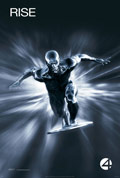 Last April, Will took a look at several superhero movie projects that were generating some buzz. Some, like "Superman Returns" and "Spider-Man 3," were already on the schedule while others, like "Wolverine" and the new Batman flick, were in the very early stages of production. So where do we stand a year later? Since Will's initial piece, we've seen the release of "X-Men: The Last Stand," "Superman Returns," "Ghost Rider" and "Spider-Man 3," while "Fantastic Four: Rise of the Silver Surfer" is due out later this summer. This time around, Will updates the status of "Batman: The Dark Knight," "Captain Marvel" and, yes, even "Wonder Woman."
Last April, Will took a look at several superhero movie projects that were generating some buzz. Some, like "Superman Returns" and "Spider-Man 3," were already on the schedule while others, like "Wolverine" and the new Batman flick, were in the very early stages of production. So where do we stand a year later? Since Will's initial piece, we've seen the release of "X-Men: The Last Stand," "Superman Returns," "Ghost Rider" and "Spider-Man 3," while "Fantastic Four: Rise of the Silver Surfer" is due out later this summer. This time around, Will updates the status of "Batman: The Dark Knight," "Captain Marvel" and, yes, even "Wonder Woman." Here’s a tip for all you struggling actors out there: If you even get the slightest whiff of a comic-book-inspired or superhero-themed script, screw the whole “reading it beforehand” thing and jump straight to the “try desperately to get an audition, no matter what” phase, because that’s where the money is these days.
Yes, friends, we said it last summer, and it still holds true today: it’s a beautiful time to be a comic book fan. Even better, it’s no longer the domain of the kind of guy who’s already pressed and folded his “My Virginity Is In Mint Condition” t-shirt for the opening day of Comic-Con 2007. (Not that there’s anything wrong with that.) When one of the most buzzed-about original dramas on network television centers on people with abilities beyond those of mere mortals – and if you haven’t jumped on the “Heroes” bandwagon yet, you’re really missing out – even the most macho of men can probably stop claiming that they only watched the “X-Men” flicks because they wanted to see Rebecca Romijn covered in nothing but blue body paint.
Comic books and superheroes have taken a long and winding path to get to their current position of mainstream acceptance, however, and nowhere has that been more evident than on the silver screen. In fact, when speaking of the comic book film genre, you can very easily divide cinematic history into two parts: before “Superman: The Movie,” and after “Superman: The Movie.”
Prior to that, superheroes just hadn’t been considered feature-film fodder. Oh, sure, they were all over TV and practically had been since its inception (appropriately, the first such series was “The Adventures of Superman,” which premiered in 1952), but in theaters, they couldn’t get arrested. Mind you, several superheroes, including Batman, Captain Marvel, Captain America, and, yes, Superman managed to have their adventures serialized in the ‘40s…but that was the extent of it.
In 1978, though, everything changed.
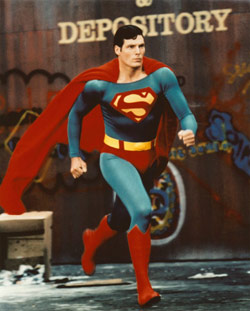 “You will,” the movie posters instructed filmgoers, “believe a man could fly.” Of course, we didn’t…but, damn, in 1978, them special effects looked fantastic. Christopher Reeve, all but an unknown at the time, became a more definitive Superman than any of the others who’d preceded him, and it’s fair to suspect that Dean Cain, Tom Welling, and Brandon Routh were all shaking in their boots the first time they realized that their performances would be compared to Reeve’s. A sequel was green-lighted before the first flick even made it into theaters, and despite directorial battlings behind the scenes (it was helmed by Richard Donner when it began, but it finished as a Richard Lester flick), “Superman II” was arguably even more fun than its predecessor, thanks to the trio of villains from the Phantom Zone.
“You will,” the movie posters instructed filmgoers, “believe a man could fly.” Of course, we didn’t…but, damn, in 1978, them special effects looked fantastic. Christopher Reeve, all but an unknown at the time, became a more definitive Superman than any of the others who’d preceded him, and it’s fair to suspect that Dean Cain, Tom Welling, and Brandon Routh were all shaking in their boots the first time they realized that their performances would be compared to Reeve’s. A sequel was green-lighted before the first flick even made it into theaters, and despite directorial battlings behind the scenes (it was helmed by Richard Donner when it began, but it finished as a Richard Lester flick), “Superman II” was arguably even more fun than its predecessor, thanks to the trio of villains from the Phantom Zone.
With these successes, you would think that Hollywood studios would be scrambling to buy up any and all comic book properties they could get their hands on (we always figured that’s why we ended up with a “Swamp Thing” movie), but, despite the success of the first two Superman flicks, they were still scared to jump headlong into superhero films…and possibly with good reason. “Superman III” and “Superman IV” proved lackluster at best, and nestled between them was “Supergirl,” which lost any chance of breaking out as its own franchise when Reeve couldn’t be convinced to make a cameo. (How do you make a film about Superman’s cousin and not have a single appearance by Superman?) Given that the best Marvel Comics could do for a comic book flick at the time was their infamous adaptation of “Howard the Duck,” it’s safe to say that Hollywood viewed “Superman” as little more than a ripple in an otherwise flat pond.
And then came “Batman.”
Despite much pleading from Adam West, director Tim Burton wisely chose to go in a completely different direction with his film, and not just by making the highly unexpected casting choice of Michael Keaton as Batman. Burton’s film had somewhat of a noir feel at times, acting as though the camp ‘60s TV series had never happened and instead focusing on the preferred interpretation of the character: dark, brooding, and driven by revenge. If Jack Nicholson’s portrayal of Batman’s arch rival, The Joker, was a bit over the top, audiences didn’t seem to mind; like “Superman” before it, a sequel was in the cards before the first day’s box office take had even been calculated. Eyebrows began to raise around Hollywood, and before long, a few other comic book properties were being transformed into films, such as “The Rocketeer,” “The Shadow,” and “The Phantom.” All three were highly enjoyable flicks, but none were particularly successful, possibly because they were all period pieces. Meanwhile, the “Batman” franchise was following in Superman’s footsteps in another, more unfortunate way, providing a series of declining returns until the fourth film – 1997’s excruciating “Batman and Robin” – ended not only the series but, indeed, DC’s foray into theatrical releases for more than half a decade. (We’re not really going to speak of “Steel,” the ridiculous Shaquille O’Neal vehicle, but suffice to say that its emergence in ’97 didn’t do DC any favors, either.)
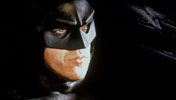 |
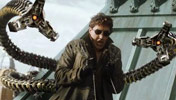 |
 |
With so many people playing the Dark Knight throughout the years, we got to thinking: Who played the best Batman? Was it the big-screen original, Michael Keaton? Christian Bale's reboot edition? George Clooney was in the worst "Batman" flick, but does that make him the worst Batman?
|
Every comic book movie needs a villain to oppose our hero and supply the requisite evil laugh. The men of the Bullz-Eye table debated the best (and, of course, the worst) superhero villains, a discussion that began with Jack's Joker and ended with the phrase "neoprene nipples."
|
Just like every superhero needs a villain, every superhero needs a damsel in distress too. Of course, more often than not the villain is the reason for the damsel's distress. We weighed in on crazies, redheads and women without lips, and the heroes who love them.
|
So at this point, you’re probably thinking, “Where the hell is Marvel?” Unfortunately, mighty Marvel was battling back from bankruptcy in the mid-‘80s, and they made a few major tactical errors along the way. The most crucial came when they auctioned the film rights to “Spider-Man” to Cannon Films, who seemed incapable of pulling a “Spider-Man” movie together. (Too bad; at one point, James Cameron was attached to the flick!) The other attempts at comic book adaptations were less than stellar; 1989’s “The Punisher” and 1991’s “Captain America” flick were both so bad that they ended up going straight to video.
The most ridiculous move from the Marvel camp, though, came with 1994’s “Fantastic Four” movie, which you’ve probably never seen…well, not unless you’re one of those shady, disreputable types who dares to watch bootleg DVDs. Fortunately, Bullz-Eye has several such individuals on staff – that’s right; we like to live on the edge – so we have seen it, and, y’know, once you take into consideration how low the budget was, the film itself is easily as much fun to watch as the more recent version. But, okay, we know, you want to know why you’ve never seen it. According to Roger Corman, who produced the flick, the studio – New Horizons – had the legal rights to create a film based on the Fantastic Four, but they weren’t ready to produce a full-blown, big-budget version…but if they didn’t produce something, they’d lose the rights. Basically, the only reason it was made in the first place was to secure copyright to the property; the producers never intended to release it properly in theaters. Unfortunately, no one bothered to let the director or any other of the film’s creators in on this fact! Nice. It’s still strange that no one figured out a loophole to get it onto DVD when the 2005 version proved to be such a success. Oh, well, maybe after “The Rise of the Silver Surfer” kicks box office butt.
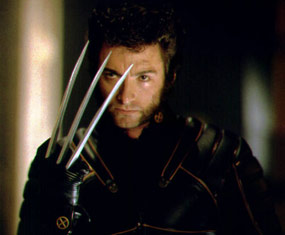
Despite all these setbacks, Marvel finally, if belatedly, found its foothold in theaters via a somewhat surprising source: a rather obscure – at least to the mainstream – character named Blade. Wesley Snipes played the vampire hunter who’s half-vampire himself, and the action-packed, Steven Norrington-directed action flick was a big success, one which warranted two sequels (as well as a less-warmly-received cable series on Spike TV). From there, Marvel had enough pull to finally make a film based on its most popular book at the time: "X-Men."
And with that, my friends, the modern-day “comic book movie equals sure-fire blockbuster” era began in earnest.
Marvel decided to make up for lost time. The long-delayed “Spider-Man” film finally came to fruition and was a gargantuan hit, spawning…well, you probably already know how many sequels it’s spawned. (Hell, you probably still have your ticket stub for the third flick in your pocket.) Suffice to say that it was a big hit. Less successful were “Daredevil” and “Hulk,” but they were still unquestionable event films at the time of their release. The same can’t be said for “Elektra,” of course, but the new, grittier take on “The Punisher” has built a considerable following, and you can pretty much count on “Ghost Rider 2” hitting theaters within the next few years, based on the box office receipts of the first installment.
After all of Marvel’s successes, DC finally decided to get back in the game. After a few major missteps (“Catwoman”) and “Constantine”), they got in gear and reinvented the “Batman” franchise by not only starting from scratch again by retelling the origin story, but also by bringing in “Memento” director Christopher Nolan to make things ever darker and grittier than Tim Burton’s take. Next stop? A new “Superman” film, of course.
So where are we now?
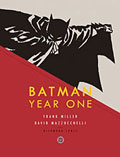 So are you one of those people who sees all the latest comic book movies but then rips on people who read comic books? If so, it may be time to change your hypocritical ways. Will's got a list of some of the better graphic novels and trade paperback collections for the heroes who've made it to the big screen over the years, including Superman, the X-Men and Spider-Man. Now's your chance to see what you've been missing.
So are you one of those people who sees all the latest comic book movies but then rips on people who read comic books? If so, it may be time to change your hypocritical ways. Will's got a list of some of the better graphic novels and trade paperback collections for the heroes who've made it to the big screen over the years, including Superman, the X-Men and Spider-Man. Now's your chance to see what you've been missing.Well, for one thing, March 2007 found Zach Snyder’s adaptation of the Frank Miller graphic novel, “300,” murdering the box office competition…and mentioning that reminds us that we’ve all but glossed over a sub-section of comic book movies: adaptations of original graphic novels, a.k.a. self-contained stories that generally stand outside the world of superheroes, if not always in what one might call “the real world.” As with superhero flicks, Hollywood’s embrace of graphic novels started slowly, with a mix of art house hits (Daniel Clowes’ “Ghost World” and Harvey Pekar’s “American Splendor”) and the good-but-not-spectacular box office takes of films based on Alan Moore’s “From Hell,” Max Allan Collins’ “Road to Perdition” and John Wagner’s “A History of Violence.” Once Robert Rodriguez’s take on Miller’s “Sin City” brought in over $100 million worldwide, that familiar call went out again: buy up all the properties you can get your hands on!
Inevitably, though, the money – i.e. the merchandising dollars – remains with the spandex-wearing population of the comic book world. Marvel and DC each have more than half a dozen such flicks in development, as do several independent companies (we’re not trying to give them short shrift, it’s just that their names wouldn’t necessarily mean anything to you), and it’s a given that as each of these movies begin their descent into a theater near you, the marketing campaigns will be insane. Every season has its “event films,” and it’s going to be a fair while before we see one that doesn’t include a comic book movie of some sort.
Are we likely to experience a decline in the future? Well, nobody can predict Hollywood trends with 100% accuracy, of course, but given the amount of quality material that continues to emerge from the various comic book publishers nowadays, it seems pretty unlikely.
You can follow us on Twitter and Facebook for content updates. Also, sign up for our email list for weekly updates and check us out on Google+ as well.





